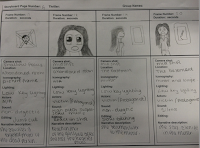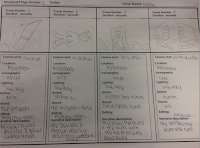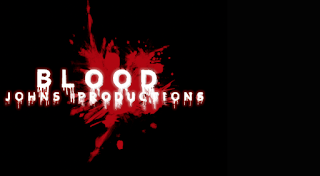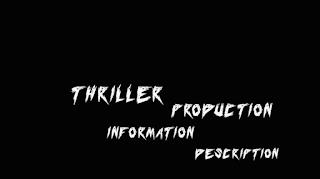Filming schedule is important to have as it makes the group understand more about what we have done and how we done it; it's important to have a filming schedule as it makes it clearer when each blog was due and it organises our work; with a clearer idea of when we did them. It's like a storyboard however it is more in detail of the times we would be doing each frame(scene). By nothing down everything we would need to create a successful opening sequence it is key to have all everything organised. The filming schedule makes us have a better idea of what times would be appropriate to film.
When we began filming we followed the schedule as it made us as a group more organised and made us have a clearer idea of what we needed to do to make the filming not stressful and confusing. With the Filming schedule it gave us a the mindset of what needs to be done and where it should be done by, by setting deadlines of each filming session; it gives us more time to develop on what we have already filmed by editing it. When we discussed our group storyboard we discussed that their would be a shot of an abandoned house- this house is now and abandoned house in Buchurst Hill. Also with this first frame we discussed and decided that it would be a long shot however now it's an establishing shot to begin the sequence, as this is more effective and creates a sense of sinister more to the audience.
By having the filming schedule it's made my group and myself, understand that with this schedule we need to follow step by step to ensure that it's a successful sequence; if we didn't go through with planning the whole ideas of the schedule then it would be confusing to everyone in the group as to when we would need to film our sequence. Moreover the whole idea of this is also to ensure that everyone has a copy of what is going to happen, so nobody in the group gets confused or doesn't know what needs to be filmed when or what iconography will be included in certain days for filming. It's to get every member prepared for the process of the upcoming filming.
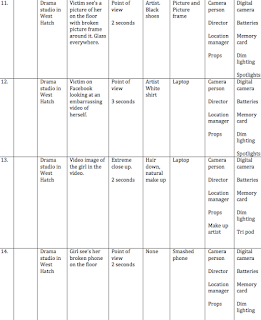
When we began filming we followed our filming schedule as it made the group and myself more organised as to what we would need to include. However we made changes when filming such as not using the accurate sounds that we discussed in our schedule. However the outfits are slightly different as we mentioned that the victim should wear black leggings however didn't follow through with this idea; also the victims make-up wasn't natural and didn't look innocent whatsoever, the character for the victim only was conventional as her gender and overall appearance besides her involvement in costume and hair and make up; The victims costume was only a white blouse which wouldn't be necessarily conventional as it doesn't really portray innocence; to improve this it would be more conventional to add in the filming schedule that we are going to use a white floaty dress or top as that is more of a purer look. The role of the filming schedule makes the whole group have a better understand of what we would need to do once we begin filming.









